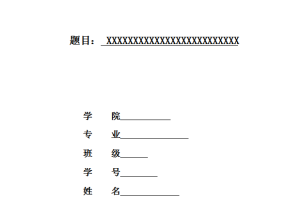摘要
随着经济社会的迅速发展,数学不仅是一门学习数学知识的学科,同时更是一门承担着发展人们的逻辑思维能力的学科,数学在人们的生活中起着举足轻重的作用。而数学作为幼儿园五大领域科学当中的一部分,对于儿童逻辑思维能力的发展起着重要的作用,因此幼儿园也越来越重视幼儿的数学教育活动。
《幼儿园教育指导纲要》中指出要引导幼儿对周围环境中的数、量、形、时间和空间等现象产生兴趣,建构初步的数学概念[1]。其中数概念的学习是幼儿园数学教育活动的一个重要组成部分,同时也是幼儿学习数学的起点,在以前的研究中发现,中班是幼儿学习数概念的关键时期,也是掌握水平最高的时期。而对于幼儿园的教育工作者而言,只有充分的了解了中班幼儿对于数概念的掌握情况,才可以更好的采取措施促进中班幼儿数概念更好的学习和发展。
为了了解中班幼儿对于数概念的掌握情况,对北京市朝阳区某公办民助幼儿园进行了调查研究,发现中班幼儿对于数概念的掌握情况整体较好,在点数、按数取物和按物取数、相邻数、顺着数和倒着数、认读10以内的阿拉伯数字掌握情况非常好。但在10以内的序数和10以内数的守恒的掌握方面存在着比较严重的问题。而作为中班的幼儿教师不清楚对于中班的孩子来说数概念要掌握哪些方面的内容,建议幼儿园定期开展教师对于《幼儿园教育指导纲要》和《3-6岁儿童发展指南》的学习,同时教师也要采用适合幼儿学习的方法来帮助幼儿进行数概念的学习。
关键词:中班幼儿;数概念发展
abstract
With the rapid development of economy and society, mathematics is not only a subject of learning mathematics knowledge, but also a commitment to the development of people’s logical thinking ability of science, mathematics in people’s lives plays a pivotal role. As a part of the five areas of kindergarten science, mathematics plays an important role in the development of children’s logical thinking ability, so kindergartens are paying more and more attention to children’s mathematics education activities.
“Kindergarten education guidelines” pointed out to guide children to the surrounding environment, quantity, shape, time and space and other phenomena of interest, the construction of the initial mathematical concepts. The study of the concept of mathematics is an important part of kindergarten mathematics education activities. It is also the starting point of children’s learning mathematics. In previous studies, it is found that middle class is the critical period of the concept of early childhood learning and the highest level of mastery. For kindergarten educators, only a full understanding of the middle school children for the number of concepts to grasp the situation, can better take measures to promote the concept of middle school children to learn and develop better.
In order to understand the middle school children for the number of the mastery of the situation, the Beijing Chaoyang District, a public welfare kindergarten conducted a survey and found that the middle school children for the concept of the overall grasp of the situation in the points, according to the number of points and press The number of objects taken, the number of adjacent, along the number and the number of back, read within 10 of the Arabic numerals to master the situation is very good. But there are more serious problems in the ordinance of less than 10 and the conservation of the number within 10. And as a middle school kindergarten teachers do not know for the children in the middle of the number of concepts to grasp what the contents of the proposed kindergarten teachers regularly for the “kindergarten education guidelines” and “3-6 year old child development guide” learning, At the same time teachers should also use the method suitable for early childhood learning to help children to carry out the concept of learning.
Key words: middle school children, number concept development
目录
一、 绪论………………………………………………………………………………………………………………. 6
(一)选题意义……………………………………………………………………………………………………. 6
(二)选题目的……………………………………………………………………………………………………. 6
(三)研究问题……………………………………………………………………………………………………. 6
(四) 研究对象……………………………………………………………………………………………………. 6
(五)研究的主要方法………………………………………………………………………………………….. 6
(六)文献综述……………………………………………………………………………………………………. 7
- 概念界定……………………………………………………………………………………………………. 7
- 关于学前儿童的数概念的相关研究………………………………………………………………. 7
- 关于学前儿童数概念内容的相关研究…………………………………………………………… 9
二、研究结果……………………………………………………………………………………………………………. 10
(一)点数10以内物体……………………………………………………………………………………….. 11
(二)按数取物或按物取数………………………………………………………………………………….. 11
(三)10以内相邻数间多1或少1………………………………………………………………………… 12
(四)10以内的序数…………………………………………………………………………………………… 12
(五)10以内数的守恒……………………………………………………………………………………….. 12
(六)10以内顺着数和倒着数……………………………………………………………………………… 13
(七)认读10以内数的阿拉伯数字………………………………………………………………………. 13
三、结论与分析…………………………………………………………………………………………………………. 14
(一)中班幼儿数概念的整体掌握水平比较好……………………………………………………….. 14
(二)数概念的各内容间的掌握差距太大……………………………………………………………… 14
(三)建议…………………………………………………………………………………………………………. 14
参考文献…………………………………………………………………………………………………………………… 15
致谢…………………………………………………………………………………………………………………………. 17





